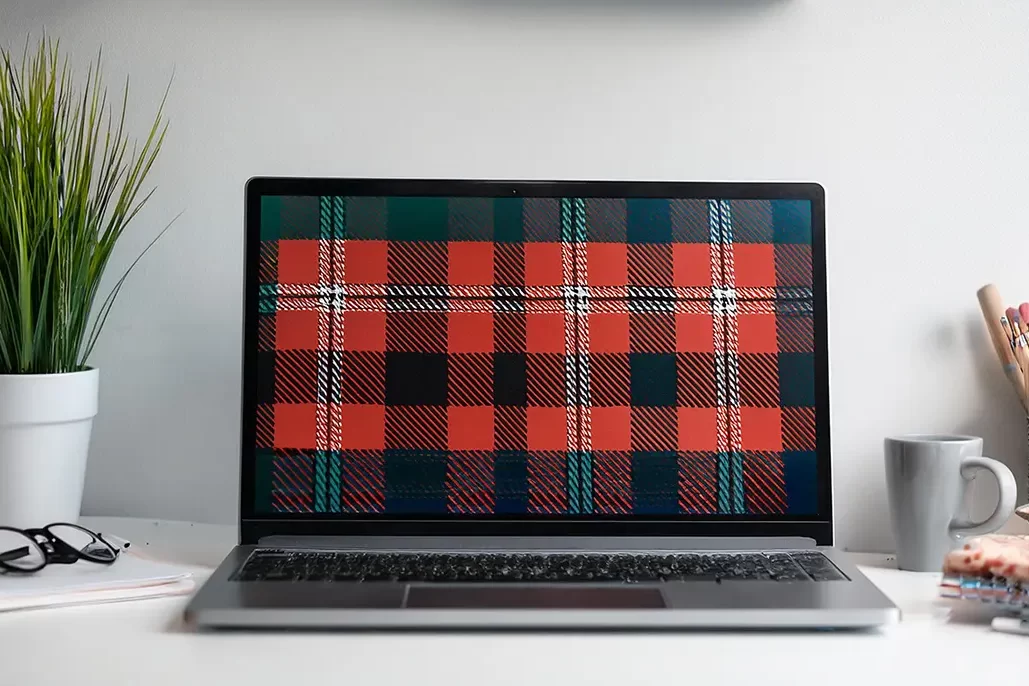Scotland’s rich cultural heritage and iconic patterns have left a lasting mark on various aspects of design, and user experience (UX) design is no exception.
The timeless appeal of plaid, also known as tartan, has transcended its origins to become a source of inspiration in the digital design world.
Let’s explore how the principles behind Scotland’s beloved patterns can influence modern UI/UX design, creating interfaces that are not only visually striking but also intuitively functional.
The Timeless Appeal of Plaid Patterns
Plaid patterns are deeply rooted in Scottish tradition, each design carrying its own unique story and meaning. These patterns, characterised by their intersecting lines and vibrant colours, have long been associated with identity, heritage, and craftsmanship. In the context of UI/UX design, plaid’s structured yet flexible grid can be seen as a metaphor for creating user interfaces that are both organised and adaptable.
Grid Systems and Structure
One of the core elements of plaid patterns is their grid-like structure. This concept translates seamlessly into UI/UX design, where grid systems are fundamental to creating balanced and visually appealing layouts. A well-defined grid system ensures consistency across a digital product, making it easier for users to navigate and interact with content. By applying the principles of plaid patterns, designers can create interfaces that are not only aesthetically pleasing but also functionally coherent.
Colour and Contrast
Plaid patterns are known for their bold use of colour and contrast. This can be effectively applied in UI/UX design to create visually engaging interfaces. The strategic use of contrasting colours can guide users’ attention to important elements, such as call-to-action buttons or key information. Additionally, incorporating a range of colours inspired by traditional tartans can add a unique and culturally rich touch to a digital product, making it stand out in a crowded market.
Cultural Relevance and Branding
Incorporating elements of Scottish design, such as plaid patterns, into a digital product can enhance its cultural relevance and strengthen its branding. For Scottish brands, or those wishing to evoke a sense of heritage and tradition, using tartan-inspired designs can create a deeper connection with their audience. This approach not only reinforces brand identity but also offers users a more authentic and memorable experience.
Flexibility and Adaptability
Plaid patterns are inherently flexible, capable of being adapted to various contexts while retaining their core identity. Similarly, UI/UX design must be adaptable to different devices, screen sizes, and user needs. By embracing the versatility of plaid patterns, designers can create responsive interfaces that provide a consistent user experience across multiple platforms. This adaptability is crucial in today’s digital landscape, where users expect seamless interactions regardless of how they access a product.
The influence of Scottish plaid patterns on UI/UX design demonstrates how traditional elements can be reimagined in modern contexts. By incorporating the principles of structure, colour, cultural relevance, and adaptability, designers can create digital products that are both visually appealing and functionally effective. At Taesea, we believe in drawing inspiration from diverse sources to craft user experiences that are as rich and engaging as the heritage they reflect.
Stand Out in the Market with Taesea’s Innovative Solutions
If you’re interested in learning more about how Taesea can assist your business in developing your brand, marketing, and design requirements, please do not hesitate to contact us. We have a team of experts who are passionate about creating innovative and effective solutions that will help your business stand out in the market. Contact us today to learn more about our services and how we can help your business succeed.






